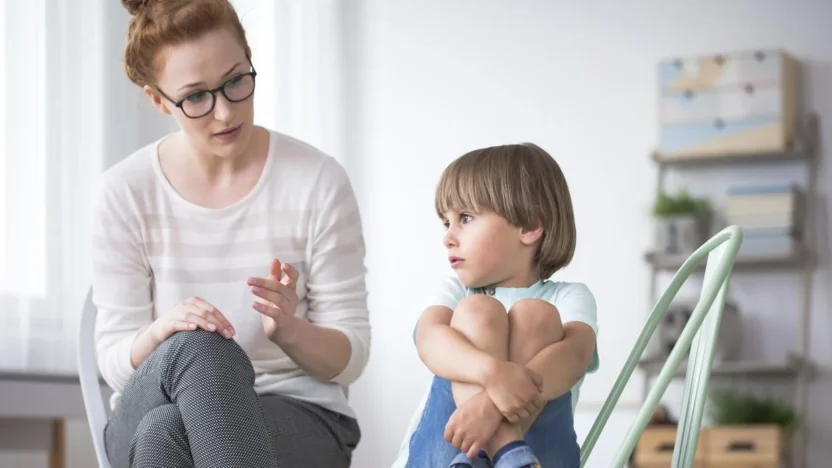
In today’s fast‐paced world, parents often struggle to communicate clearly with their children about complex emotions. This article explores the art and science of emotional communication and explains why it is a crucial element of effective parenting. By understanding key psychological principles and applying well‐tested strategies, you will learn how to create an environment where emotions are expressed healthily and constructively. Whether your child is reluctant to share feelings or shows intense emotional responses, we offer practical advice to transform daily interactions into opportunities for meaningful connection and personal growth.
Understanding the Basics of Emotional Communication
Emotional communication goes beyond mere words; it involves understanding, interpreting, and expressing feelings in ways that resonate with those around us. In parenting, clearly conveying emotions can have a lasting impact on how children see themselves and interact with the world. This process builds empathy, clarity, and trust between parent and child.
Historically, emotions were seen as intangible elements that were rarely discussed within families. However, modern psychological research highlights that teaching children about emotions is essential for developing strong cognitive and social skills. Parents who nurture emotional literacy often witness improvements in behavior, academic performance, and interpersonal relationships. Trusted sources like the American Psychological Association provide solid evidence supporting early emotional education.
The journey starts at home with simple, everyday conversations that break down complex concepts into understandable ideas. By discussing how we feel, what causes those feelings, and how we can respond appropriately, both parents and children lay the groundwork for healthy emotional expression and resilience. For example, asking your child to describe their feelings after a disagreement can foster introspection and healing.
The Psychological Foundation Behind Emotions
In psychology, emotions serve as signals that influence our behaviors and decisions. When parents help children identify their emotional states, they empower them to manage their reactions and develop empathy. A sound understanding of emotional psychology explains why some techniques are more effective than others in fostering healthy dialogue.
A central concept here is emotional intelligence. Popularized by psychologists such as Daniel Goleman, emotional intelligence comprises key elements like self-awareness, self-regulation, motivation, empathy, and social skills. Research shows that children with high emotional intelligence adapt better to academic and social pressures, smoothing their transition into adulthood.

Moreover, our emotions are deeply linked to our cognitive functions. For instance, anxiety can impair concentration, while happiness can boost problem-solving abilities. By translating academic research into accessible language, parents can tailor their communication to meet their child’s unique needs. The Harvard Center on the Developing Child, for example, offers comprehensive studies and case examples that enrich this foundation.
Key Components of Emotional Intelligence
Self-awareness is the first step: children need to recognize their emotional states before they can manage them. This skill is developed through reflective conversations and validating their experiences.
Next comes self-regulation, where techniques such as deep breathing or mindfulness help children moderate their emotional responses and manage stress effectively.
The Role of Empathy
Empathy is essential for building supportive relationships. When children learn to understand and share the emotions of others, they are more likely to respond with compassion.
Parents serve as role models by demonstrating empathy in daily life, which in turn encourages children to mirror these behaviors.
Practical Strategies for Connecting with Your Kids
After establishing a theoretical foundation, it is crucial to convert these ideas into practical actions. Effective emotional communication involves active listening, thoughtful open-ended questions, and validation of a child’s feelings.

One effective strategy is to use reflective language. When a child expresses sadness or frustration, repeating what you heard shows that you are engaged and helps the child better articulate their feelings. Research from the National Institute of Mental Health supports these practices as vital for developing emotional literacy.
In addition, creating a safe space for emotions is essential. This might include setting aside regular time for family discussions where all feelings are accepted and encouraged. Regular practice and persistence yield positive results, ultimately making children more comfortable expressing both positive and negative emotions.
Overcoming Common Challenges
Even the most dedicated parents encounter challenges when discussing emotions with their children. A common hurdle is a child’s emotional resistance, which may manifest as withdrawal or defensiveness—often a response shaped by early experiences and fear of vulnerability.
It is essential to acknowledge these difficulties without judgment. See them as opportunities to reinforce trust and resilience. A compassionate approach can transform challenges into valuable learning moments for both parent and child.
Sometimes, external factors like media influences or peer pressure can also affect a child’s willingness to express emotions. In these cases, it may be helpful to supplement your approach with additional resources such as books, counseling services, or support groups. The Child Mind Institute, for instance, provides toolkits for parents encountering similar challenges.
Handling Emotional Outbursts
When your child experiences an emotional outburst, the first step is to remain calm. Validate their feelings and model a composed demeanor.
Techniques like short time-outs or simply pausing the conversation can help both parties regain their balance before discussing the situation further.
Building Trust Over Time
Trust develops through consistent, understanding interactions. It cannot be rushed but must be nurtured gradually with patience and care.
Maintain open lines of communication even when your child appears withdrawn. This steady reassurance builds a stronger bond over time.
Implementing Long-Term Emotional Growth

Effective emotional communication is a continuous journey rather than a one-off event. Over time, consistent emotional dialogues strengthen family bonds and enhance interpersonal skills.
Establishing structured routines—such as weekly family meetings or journaling sessions—helps reinforce these critical conversations, turning them into lifelong habits. Long-term commitment to emotional education builds resilience and supports ongoing personal growth.
As your child grows, be sure to adapt your communication style to their evolving needs. Whether through daily casual chats or in-depth discussions about more significant life challenges, maintaining an environment that welcomes open discussion of emotions is invaluable. Resources like Psychology Today provide fresh insights and strategies to keep your approach effective and engaging.
ContenT Additional
To further enrich your mastery of emotional communication, consider exploring related topics such as cultural influences on emotional expression and the impact of technology on how children manage their feelings. Digital tools and apps can complement traditional approaches by teaching empathy and mindfulness, though it is important to balance screen time with direct interaction.
Many parents also benefit from joining community support groups or parenting workshops where shared experiences highlight common challenges and offer creative solutions. These environments not only provide comfort but also deliver practical advice from professionals. Incorporating these insights into your daily life is highly beneficial.
Another critical area is the influence of parental emotional health on children. When parents work on improving their own emotional intelligence through therapy, meditation, or self-help resources, they set a powerful example for their kids. The intergenerational benefits of strong emotional well-being are both profound and far-reaching.

Exploring Cultural Perspectives
Different cultures have unique ways of understanding and expressing emotions. Learning about these variations can broaden your perspective and help you adopt an inclusive approach when discussing feelings with your children.
For instance, while some cultures prioritize collective well-being and community values, others emphasize individual expression. This diversity enriches the conversation and offers multiple strategies that can be tailored to your family’s needs.
Technology and Mindfulness
Modern technology plays a complex role in shaping emotional communication. While social media and digital interactions might complicate our understanding of empathy, mindfulness apps have proven effective in managing stress and enhancing self-awareness.
Integrating these digital tools—combined with practices like mindful breathing or guided meditation—can help create balanced emotional exchanges. Moreover, many of these apps are designed with children in mind, making mindfulness a fun and engaging activity for the whole family.
Navigating the journey of emotional communication with your kids can be both rewarding and challenging. With a blend of psychological insights and practical strategies, you can build mutual understanding, strengthen family bonds, and support your child’s emotional development. Remember that progress requires consistent effort and empathy. By integrating the ideas discussed here, you pave the way for a resilient, emotionally intelligent future. Embrace the power of open dialogue and create a nurturing space where every emotion is valued.




